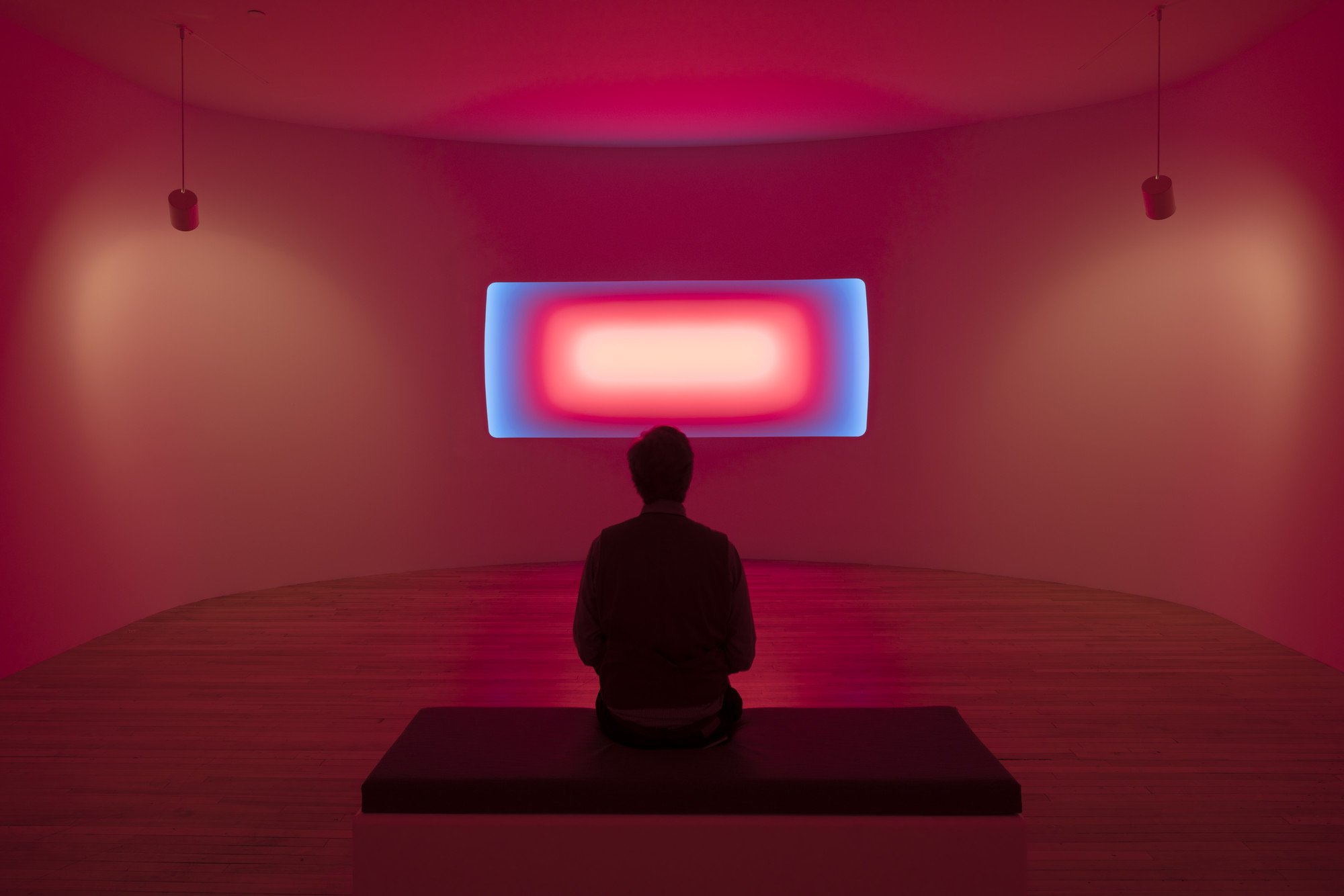
In these turbulent times, creativity and empathy are more necessary than ever to bridge divides and find solutions. Artnet News’s Art and Empathy Project is an ongoing investigation into how the art world can help enhance emotional intelligence, drawing insights and inspiration from creatives, thought leaders, and great works of art.
“James Turrell: Into the Light”
at MASS MoCA through 2025
What the museum says: “In James Turrell’s hands, light is more than simply a source of illumination: it is a discrete, physical object. His sculptures and architectural interventions elevate our experience and perception of light and space. Squares of sky seem to float, suspended, in ceilings or walls; architecture disintegrates; and brilliant geometric shapes levitate in mid-air.
“Turrell began using light as a sculptural medium in 1966, painting the windows of his studio in Santa Monica to seal off the natural light and experiment with projections. His practice has been shaped by the ongoing manipulation of architecture, framing and altering the way viewers engage with the environment.”
Why it’s worth a look: In MASS MoCA’s extended exhibition, “Into the Light,” one Turrell work from each decade of his years-long career is on view, revealing how his practice has evolved. Early works—such as Afrum from 1967, in which a beam is projected into the corner of a gallery—were revolutionary for Turrell’s use of architecture, and for making seemingly three-dimensional objects simply out of light.
In later works, Turrell mastered the Ganzfield (whole field) effect, in which viewers are fully immersed in light that changes color. Turrell’s controlled environments are a full sensory experience—which is just what the artist intends. With a background in perceptual psychology, he has dedicated his work to calling attention to light and space in all its majesty.
MASS MoCA is now building a Turrell Skyspace in a concrete water tank on its campus. The project has been more than 30 years in the making, and began when Turrell first visited the (then empty) museum, and imagined one of his colored sky works there.
How it can be used as an empathy workout: Being inside one of Turrell’s light spaces can be disorienting, like walking out of a dark theater into the harsh daylight; the drastic light change is often jarring. But as a shared experience, it can be extremely rewarding. Many of the artist’s inspirations come from his study of the cosmos, but not only that. Turrell is also a devout Quaker who emphasizes silent contemplation as a means to enlightenment.
Turrell’s works invite viewers to consider their own place in the world, which ultimately means considering those around us, and how we impact one another. The artist is especially invested in having viewers feel the same wonder and appreciation he does; he wants them to “enter the realm of the artist.”
“This world that we inhabit has a lot to do with the reality we form through vision,” Turrell said in a 2011 interview. “It’s taking your thinking to this other level. This happens in flight, and this is what art does… it broadens our perspective.”
What it looks like:
James Turrell, Perfectly Clear (Ganzfeld), (1991). Gift of Jennifer Turrell
© James Turrell, Photo by Florian Holzherr. Courtesy of MASS MoCA.
James Turrell, Perfectly Clear (Ganzfeld), (1991). Gift of Jennifer Turrell. © James Turrell, Photo by Florian Holzherr. Courtesy of MASS MoCA.
James Turrell, Perfectly Clear (Ganzfeld), (1991). Gift of Jennifer Turrell. © James Turrell, Photo by Florian Holzherr. Courtesy of MASS MoCA.
James Turrell, Dissolve (Curved Wide Glass), (2017). Collection of Hudson C. Lee. © James Turrell, Photo by Florian Holzherr. Courtesy of MASS MoCA.
James Turrell, Afrum (Projection), (1967). Collection of the Solomon R. Guggenheim Museum. © James Turrell, Photo by Florian Holzherr. Courtesy of MASS MoCA.
James Turrell, Raethro II, Magenta (Corner Shallow Space), (1970). Collection of Myffanwy Anderson. © James Turrell, Photo by Florian Holzherr. Courtesy of MASS MoCA.
James Turrell, Once Around, Violet (Shallow Space), (1971). Collection of Tallulah Anderson. © James Turrell, Photo by Florian Holzherr. Courtesy of MASS MoCA.